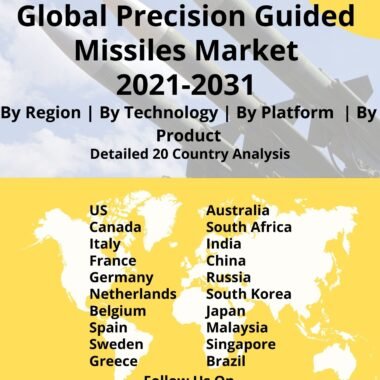Description
Satellite Transponder Market
Frequently Asked Questions of Global Satellite Telemetry And Control Systems Market
A satellite transponder is a key component of a satellite communication system. It is essentially a radio frequency (RF) communication channel on a satellite that receives signals from an Earth station, amplifies them, and retransmits them back to another location on Earth. Transponders play a crucial role in satellite-based communications, including television broadcasting, telecommunications, internet connectivity, and data transmission. A transponder receives signals from an Earth station’s uplink frequency, typically in the C-band, Ku-band, or Ka-band, and amplifies and converts them to a different frequency for transmission back to Earth (downlink). The process of receiving, amplifying, and retransmitting signals is done electronically within the transponder.
Satellite transponders are a fundamental element of satellite communication systems, enabling the transmission of signals over vast distances. They are crucial for a wide range of applications, from broadcasting television signals to providing internet connectivity in remote areas and supporting disaster response and emergency communications. Transponders operate within specific frequency bands allocated for satellite communication. Common bands include the C-band (4 to 8 GHz), Ku-band (12 to 18 GHz), and Ka-band (26.5 to 40 GHz). Each band has its advantages and usage considerations, such as rain fade susceptibility and available bandwidth.
A satellite typically contains multiple transponders, each operating on a specific frequency or frequency range. Each transponder can handle multiple channels or signals simultaneously, allowing for efficient use of satellite capacity. The bandwidth of a transponder determines the amount of data that can be transmitted through it. Satellite operators manage and allocate transponder capacity to different services and customers, such as TV broadcasters or telecommunications providers, based on their specific needs. Satellites can have different transponder configurations based on their mission and intended applications. For example, satellites used for television broadcasting may have a higher number of transponders optimized for video distribution, while those used for broadband internet services may prioritize data transmission.
Major factors driving Satellite Transponder Market Growth
The market for satellite transponders is driven by the increasing demand for satellite-based communication services, including television broadcasting, broadband connectivity, data transmission, and remote sensing. The proliferation of IoT and M2M applications requires reliable and ubiquitous connectivity. Satellite transponders offer a viable solution for providing connectivity to remote areas and applications such as asset tracking, environmental monitoring, and smart agriculture. Satellite transponders are crucial for providing connectivity to moving platforms such as aircraft, ships, and trains. The demand for in-flight connectivity, maritime communication, and mobile broadband services in remote areas fuels the market growth.
Trends influencing the Satellite-Transponder Market Size
Advanced satellite systems incorporate technologies such as software-defined radios (SDRs) and reconfigurable transponders. These allow operators to adapt transponder characteristics, such as frequency allocation, power levels, and modulation schemes, to meet changing market demands and optimize performance.
Satellite Transponder Market Forecast & Dynamics
The market for satellite transponders is driven by the increasing demand for satellite-based communication services, including television broadcasting, broadband connectivity, data transmission, and remote sensing. The market forecast incorporates a thorough market size and market analysis. The market analysis includes regional market size, opportunities, drivers, and restraints. Country-wise market size is also included in the regional analysis.
Satellite Transponder Market Analysis for Recent Developments
Rocket Factory Augsburg AG (RFA) has signed a definitive term sheet with the French space agency CNES to supply launch services from French Guiana’s Kourou Space Centre (CSG). In 2025, RFA will launch from the ELM-Diamond launch complex. With access to what is perhaps Europe’s most important spaceport, launch service provider RFA will be able to offer customers inclinations ranging from equatorial to polar. RFA’s inventory of orbits now includes low inclination orbits like as GTO, MEO, GEO, lunar, and even interplanetary mission profiles. As a result, it is possible to provide even more flexible and exact servicing of all types of missions for Earth observation, connection, or even complete constellations.
A SpaceX Falcon 9 rocket launched from Cape Canaveral, carrying a European-built communications satellite into orbit, the centerpiece of a nearly $550 million effort to offer internet connection to rural Indonesia. At 6:21 p.m. EDT (2221 UTC), the 4.6-metric tonne (10,100-pound) SATRIA satellite lifted off atop SpaceX’s Falcon 9 rocket from pad 40 at Cape Canaveral Space Force Station. In the final seconds of the countdown, the Falcon 9’s nine kerosene-fueled Merlin engines ignited, and hold-down clamps released the 229-foot-tall (70-meter) rocket from pad 40. A few moments later, the Falcon 9 took off from Cape Canaveral and thundered into the mainly sunny late afternoon sky.
The global landscape of satellite transponders has seen notable advancements, influencing the efficiency, capacity, and flexibility of satellite communication systems. Transponders are essential components that receive, amplify, and retransmit signals between Earth-based ground stations and satellites, facilitating various communication services. Technological innovations have led to higher frequency bands, improved modulation schemes, and more efficient power amplifiers, increasing the data transfer rates and capacity of satellite transponders. This evolution supports the growing demand for high-speed broadband internet, broadcasting, and other communication applications.
The deployment of high-throughput satellites (HTS) has become increasingly prevalent, characterized by a higher number of transponders and advanced frequency reuse technologies. This enhances the overall capacity and coverage of satellite communication networks, especially in regions with limited terrestrial infrastructure. Flexibility in transponder configurations, allowing for reconfiguration and adaptive allocation of resources, has become a focal point. This adaptability enables satellite operators to optimize transponder usage based on changing market demands and dynamic communication requirements. Global collaboration in spectrum management, satellite standardization, and regulatory frameworks ensures harmonious and interoperable use of satellite transponders across different satellite systems and operators. The ongoing advancements in satellite transponders in 2023 underscore a commitment to meeting the evolving needs of global communication services.





